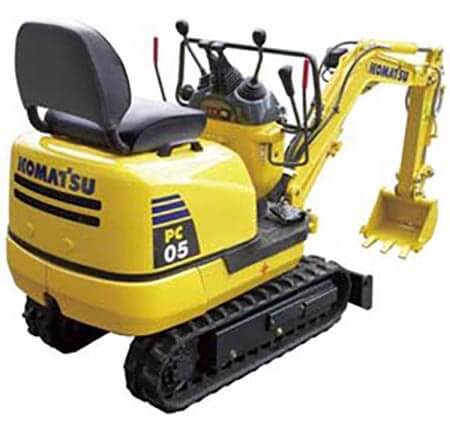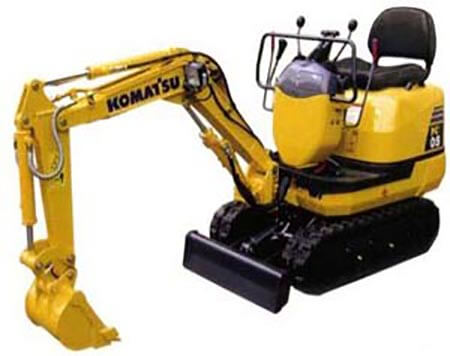2000
The IT revolution had a tremendous influence on the technology of construction equipment as well. The satellite operation management system was developed during the 90's as a method to supervise and manage equipment from a remote distance, and became an industry standard during this era.


The minimal rear-swing radius Hydraulic excavator US series has been very popular at various construction sites from pluming works to regular engineering projects.
PC128US-8 and PC138US-8 were the first mass-produced Hydraulic excavators equipped with Roll Over Protective Structures. It protects operators, along with the winding seat belt, in case the unit tips as well as from falling objects.
The new rigid, noise absorbing cab combined with noise reduction of the engine, hydraulic device, and air conditioner resulted in surprising quietness, which helps reduce operator stress and fatigue.
Weight: 13,400kg, Bucket capacity: 0.5m3 (PC138US-8)
Hydraulic excavator
Since its first emergence in 1951, it took only 50 years for the hydraulic shovel to establish its primary position on construction sites worldwide. Its size ranges from mini to super size depending on the scale of construction, and during the half century, it kept evolving by achieving a minimum rear-swing radius and adapting styles that would work with characteristics of each site. Mirroring the movement of a human hand, a hydraulic shovel will continue to evolve during the 21st century.